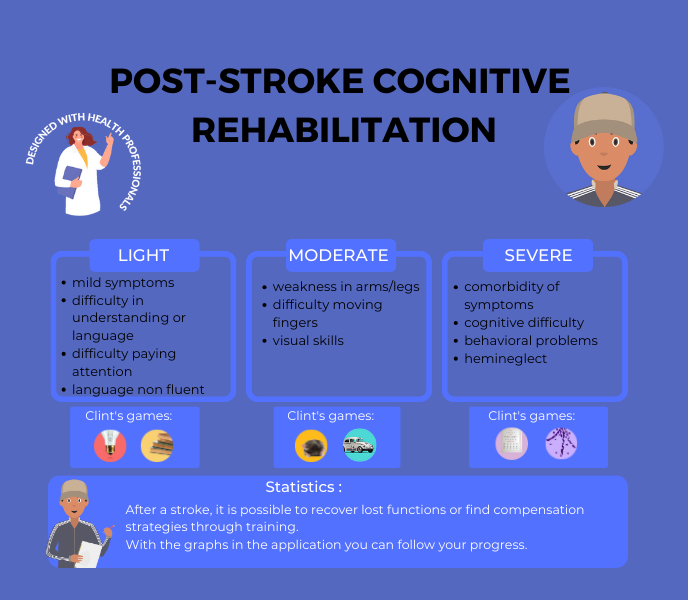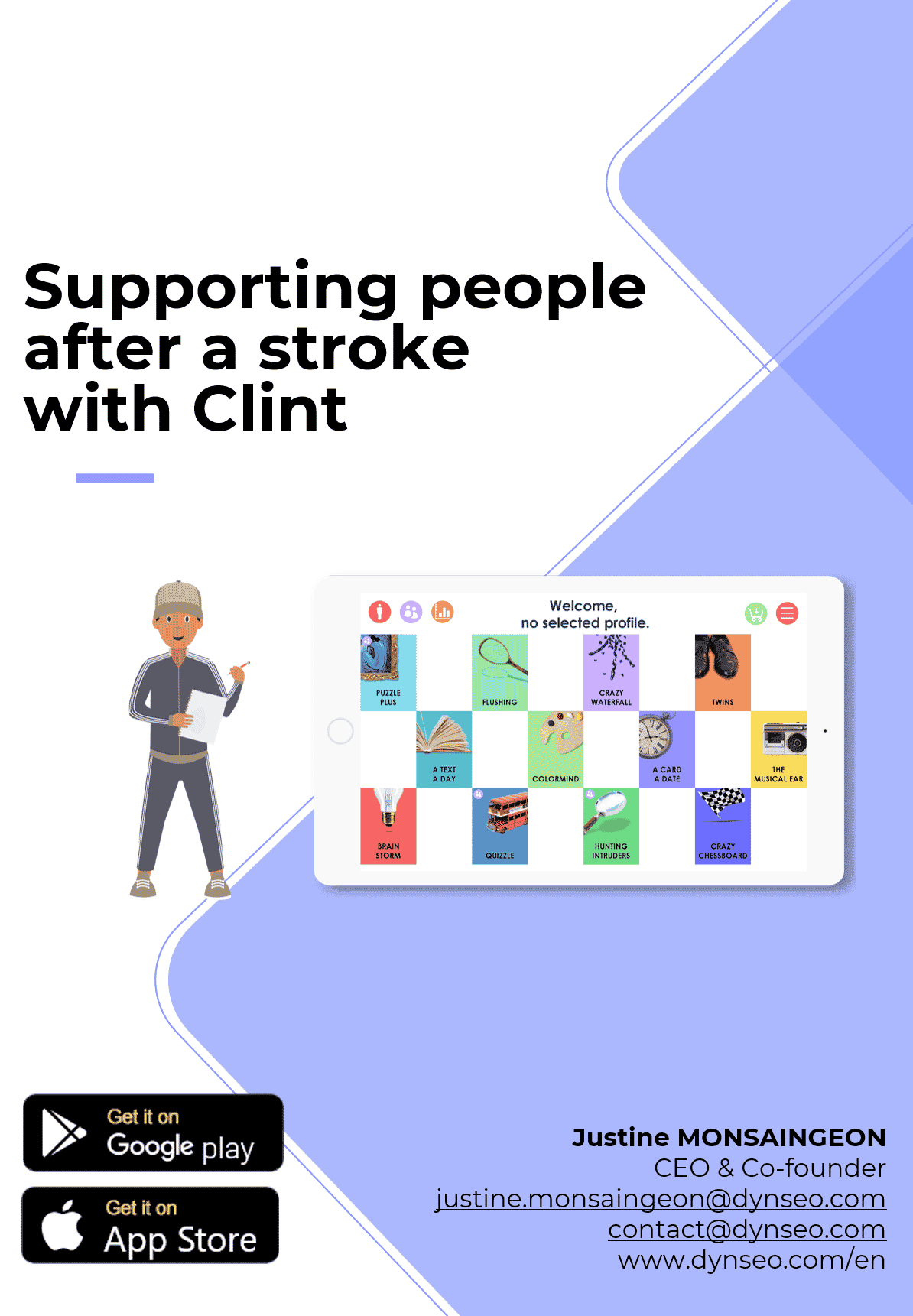A stroke is a serious medical condition that occurs when blood flow to the brain is interrupted, causing damage to brain cells. Strokes can have devastating consequences, including loss of motor function, memory loss and even death. It is therefore essential to take steps to prevent recurrent strokes, which occur in some people who have already had a stroke. Preventing recurrent stroke is important, as it can help reduce the risk of complications and improve quality of life for those affected.
Understanding risk factors for recurrent stroke
Several risk factors can increase the chances of developing a recurrent stroke. Age is one of the main risk factors, as older people are more likely to have underlying health problems that can contribute to stroke. Gender may also play a role, as men tend to have a higher risk of stroke than women. What’s more, people who have already had a stroke are more likely to have another one.
It’s important to identify and manage these risk factors to prevent recurrent strokes. This can include lifestyle changes such as adopting a healthy diet, regular exercise, controlling blood pressure and stopping smoking. By working with a healthcare professional, people who have already had a stroke can take steps to reduce their risk of recurrence.
Adopt a healthy diet to prevent recurrent strokes
A healthy diet can play a crucial role in preventing recurrent strokes. Foods rich in fruits and vegetables, whole grains and lean proteins can help reduce the risk of stroke by maintaining a healthy weight, controlling blood pressure and improving overall health. It’s also important to reduce salt intake, as excessive salt consumption can increase blood pressure.
For a healthy diet, we recommend eating at least five portions of fruit and vegetables a day, choosing whole grains rather than refined ones, and limiting consumption of processed foods high in salt and fat. It’s also important to drink enough water and limit alcohol consumption. By working with a nutritionist or dietician, people who have already had a stroke can develop an eating plan tailored to their specific needs.
The importance of exercise in reducing the risk of stroke
Regular exercise can help reduce the risk of recurrent stroke. Exercise can help maintain a healthy weight, improve blood circulation and strengthen the cardiovascular system. It can also help reduce stress, which is a risk factor for stroke.
To incorporate exercise into daily life, we recommend at least 150 minutes of moderate aerobic activity per week, such as brisk walking, swimming or cycling. It’s also important to do muscle-strengthening exercises at least twice a week. Finding a physical activity you enjoy and doing it regularly can make exercise more enjoyable and easier to maintain over the long term.
Control blood pressure to prevent recurrent stroke
High blood pressure is one of the main risk factors for recurrent stroke. High blood pressure can damage blood vessels and increase the risk of blood clots, which can lead to stroke. It is therefore essential to control blood pressure to prevent recurrent strokes.
To control blood pressure, we recommend regular medication prescribed by a health professional. It’s also important to reduce salt intake, as salt can increase blood pressure. With a healthy diet and regular exercise, it’s possible to maintain healthy blood pressure.
The benefits of quitting smoking to prevent recurrent stroke

Smoking is a major risk factor for recurrent stroke. Tobacco contains toxic substances that can damage blood vessels and increase the risk of blood clots. It is therefore essential to stop smoking to prevent recurrent strokes.
To stop smoking, it is advisable to seek the help of a health professional. There are several options available, including prescription medications, nicotine replacement therapy and smoking cessation programs. By working with a healthcare professional, it’s possible to develop a personalized plan to stop smoking and reduce the risk of recurrent stroke.
Managing stress to reduce the risk of stroke
Chronic stress can increase the risk of stroke by raising blood pressure and promoting inflammation in the body. So it’s important to find effective ways of managing stress to reduce the risk of recurrent stroke.
There are several stress management techniques that can help, including progressive muscle relaxation, deep breathing, meditation and yoga. It can also be beneficial to seek support from a mental health professional or participate in support groups. By finding healthy ways of coping with stress, it is possible to reduce the risk of recurrent stroke.
Improving sleep quality to prevent recurrent stroke
Sleep quality can have an impact on the risk of recurrent stroke. Poor-quality sleep can raise blood pressure and promote inflammation in the body, which can increase the risk of stroke. It is therefore important to improve sleep quality to prevent recurrent strokes.
To improve sleep quality, we recommend establishing a regular sleep routine, creating a sleep-friendly environment and avoiding stimulants such as caffeine and alcohol before bedtime. It can also be helpful to practice relaxation techniques before bedtime, such as meditation or reading. By adopting good sleep habits, you can reduce the risk of recurrent stroke.
Taking medication to prevent recurrent stroke
Medication can play an important role in preventing recurrent strokes. Certain medications can help control blood pressure, reduce the formation of blood clots or prevent inflammation in the body, which can reduce the risk of stroke. It is therefore essential to follow a course of medication prescribed by a healthcare professional.
When taking medication, it’s important to take it as prescribed by a healthcare professional. We also recommend regular appointments with a healthcare professional to monitor treatment effectiveness and make any necessary adjustments. By working closely with a healthcare professional, it is possible to reduce the risk of recurrent stroke.
The benefits of rehabilitation to prevent recurrent stroke
Rehabilitation can play a crucial role in preventing recurrent strokes.
Stroke rehabilitation isn’t just a path to recovery; it’s also a gateway to a healthier future and the key to preventing recurrent strokes. It’s a proactive approach that reaffirms not only the resilience of the human body, but also everyone’s ability to positively influence their health and quality of life. Let us explore how rehabilitation can be your ally in this vital quest:
- Strengthening the body with physiotherapy: Think of physiotherapy as personalized training, designed not only to restore strength and mobility that stroke may have diminished, but also to build a stronger foundation for your body. Every exercise, every movement is a step towards a stronger version of yourself, reducing the risk of future complications.
- Regaining independence with occupational therapy: Occupational therapy helps you regain essential daily skills, turning challenges into victories. Whether it’s preparing a meal, getting dressed or managing household tasks, occupational therapy equips you with strategies and tools adapted to your life, reinforcing your independence and confidence.
- Improving communication with speech therapy: The ability to communicate, to express your thoughts and needs, is fundamental. Speech therapy goes beyond improving speech and swallowing; it restores the bridges of communication that are essential to sharing with your loved ones and participating fully in life around you.
- A customized plan: The best thing about the rehabilitation process is that it’s entirely personalized. Working with a team of healthcare professionals dedicated to your well-being means that every aspect of your rehabilitation is tailored to your needs, your goals, and your life. It’s a collaboration where your voice counts, and every little bit of progress is celebrated.
- A holistic vision: Rehabilitation is more than just physical recovery. It also encompasses your emotional and mental well-being, offering comprehensive support. Counseling or therapy sessions can be integrated to help you navigate post-stroke emotional challenges, strengthening your mental and emotional resilience.
- Active prevention: With a focus on prevention, rehabilitation also teaches you to recognize warning signs and adopt a healthy lifestyle to minimize the risk of future strokes. It’s a proactive approach that gives you the power to protect your health over the long term.
Rehabilitation is much more than a series of therapeutic sessions; it’s a holistic, personalized approach that guides you towards the best version of yourself. It’s an invitation to work hand in hand with dedicated professionals to rebuild, strengthen and renew not only your physical health, but also your independence and joie de vivre. Every step forward is a step towards a healthier, more fulfilled future.
Preventing recurrent stroke in people with diabetes
Diabetes is a major risk factor for recurrent stroke. People with diabetes are more likely to have underlying health problems that can increase the risk of stroke. It is therefore essential to take steps to prevent recurrent strokes in people with diabetes.
To prevent recurrent strokes in people with diabetes, it’s important to regularly monitor blood sugar levels, follow a healthy, balanced diet, exercise regularly and take medications prescribed by a healthcare professional. By working closely with a healthcare professional, it is possible to reduce the risk of recurrent stroke in people with diabetes.
Preventing recurrent stroke is essential to reduce the risk of complications and improve quality of life for those affected. By adopting a healthy diet, exercising regularly, controlling blood pressure, stopping smoking, managing stress, improving sleep quality, taking medication, participating in rehabilitation and taking specific measures to prevent stroke in people with diabetes, it is possible to significantly reduce the risk of recurrent stroke. It’s important to work closely with a healthcare professional to develop a personalized plan and receive the support needed to implement these lifestyle changes. By taking preventive measures, you can protect your health and prevent recurrent strokes.
AND FOR FURTHER INFORMATION

CLINT, YOUR BRAIN COACH
With your JOE brain coach, you choose which cognitive functions to target: attention, concentration, executive functions, mental agility, strategy implementation, etc. A fun, efficient program that supports you every day.
Other articles that might interest you:
Reconstructing After Stroke: Redefining Identity and Goals.
A stroke is a serious medical condition that occurs when blood flow to the brain is interrupted, causing damage to...
The Different Types of Stroke Explained: Ischemic, Hemorrhagic and TIA.
A stroke is a serious medical condition that occurs when blood flow to a part of the brain is interrupted or reduced,...
Innovations in Stroke Treatment: From Research to Practice
Stroke, a debilitating cerebrovascular event, strikes with suddenness and severity, altering lives in an instant....





